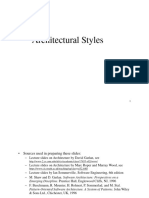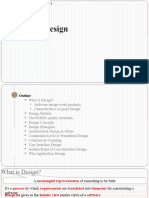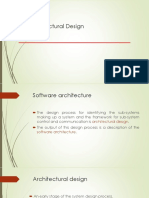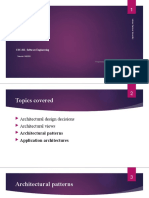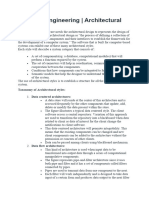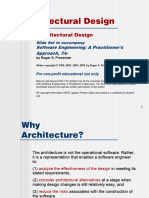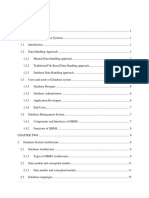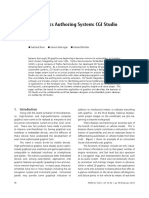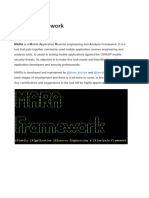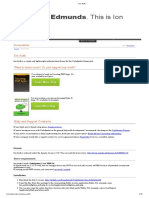0% found this document useful (0 votes)
24 views61 pagesSE2022 - Chapter 04. Software Architecture
This document discusses software architecture, emphasizing its importance in software development and the relationship between software requirements and architecture. It outlines various architectural styles, including monolithic, data flow, and object-oriented architectures, along with their components, advantages, and limitations. The document also highlights the role of software architects in designing architecture that meets both functional and non-functional requirements.
Uploaded by
ngocvx.23itCopyright
© © All Rights Reserved
We take content rights seriously. If you suspect this is your content, claim it here.
Available Formats
Download as PDF, TXT or read online on Scribd
0% found this document useful (0 votes)
24 views61 pagesSE2022 - Chapter 04. Software Architecture
This document discusses software architecture, emphasizing its importance in software development and the relationship between software requirements and architecture. It outlines various architectural styles, including monolithic, data flow, and object-oriented architectures, along with their components, advantages, and limitations. The document also highlights the role of software architects in designing architecture that meets both functional and non-functional requirements.
Uploaded by
ngocvx.23itCopyright
© © All Rights Reserved
We take content rights seriously. If you suspect this is your content, claim it here.
Available Formats
Download as PDF, TXT or read online on Scribd
/ 61





